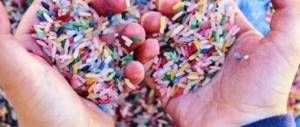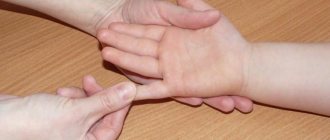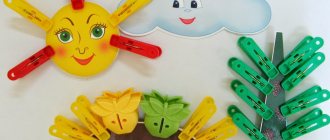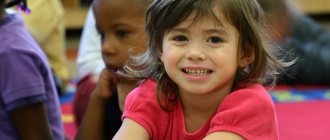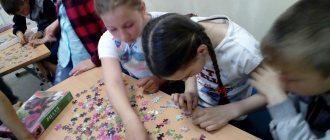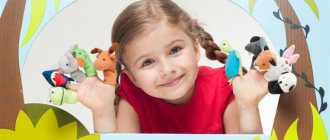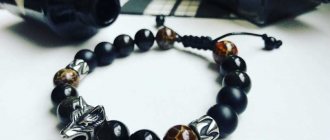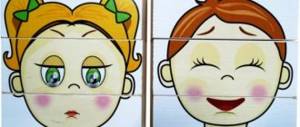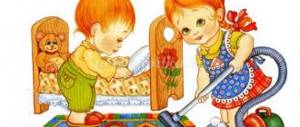Consultation for parents “Games and exercises for developing fine motor skills”
Consultation for parents “Games and exercises for developing fine motor skills”
Goal : to show methods and techniques for working with children to develop fine motor skills.
Tasks:
-increase the pedagogical literacy of parents about the role of fine motor skills in the development of the child.
- to interest parents in the relevance of this topic, to involve parents in cooperation.
-introduce the varieties of didactic material for the development of fine motor skills.
Move: “The child’s mind is at the tips of his fingers” (V. Sukhomlinsky).
Dear parents , you all know that children need to develop fine motor skills. But not everyone knows how to do it correctly? What activities, games and exercises should be done with children to develop motor skills? I suggest you consider all these questions in detail.
Preschool age is, first of all, the age of play, the age of development of creativity, imagination, and curiosity. If the fingers develop, the child’s speech and thinking will develop. The child constantly studies and comprehends the world around him. The main method of accumulating information is touch. Children need to grab, touch, stroke and taste everything. You need to start working on developing fine motor skills from a very early age. To interest a child and help him master new information, you need to turn learning into a game, do not back down if tasks seem difficult, and do not forget to praise the child. I bring to your attention games and exercises for the development of fine motor skills that can be practiced both in kindergarten and at home.
Finger gymnastics.
Finger gymnastics solves many problems in the development of a child:
— promotes mastery of fine motor skills;
- helps develop speech;
- increases brain performance;
— develops mental processes: attention, memory, thinking, imagination;
- develops tactile sensitivity;
- relieves anxiety.
Finger games are very emotional and exciting. This is a dramatization of some rhymed stories, fairy tales using hands.
Let's try to play such games with you. (Examples of finger games)
"Autumn leaves".
One, two, three, four, five (bend fingers, starting with thumb)
We will collect leaves. (clench and unclench fists)
Birch leaves,
Rowan leaves,
poplar leaves,
Aspen leaves,
Let's collect oak leaves (bend your fingers, starting with the thumb)
We'll take an autumn bouquet to mom. (“walk” on the table with their middle and index fingers).
Cabbage
| What's that squeak? | (clench and unclench fists) |
| What's that crunch? | (interlace fingers) |
| What kind of bush is this? | (palms with fingers spread out in front of you) |
| How can there be no crunch? | |
| What if I'm a cabbage? | (fingers are bent, representing a head of cabbage) |
| We chop and chop cabbage... | (edge of palm) |
| We three carrots, three | (three fists touching each other) |
| We salt the cabbage, salt it | (pinches) |
| We press and press cabbage. | (clench and unclench our fists) |
Etc.
FINGER STEPS The development of the hand and fingers is promoted not only by finger gymnastics, but also by various actions with objects.
Working with balls
Equipment : Balls of various sizes, box.
Contents : Several balls are placed on the table in front of the child. A box is placed at some distance from them. An adult shows and explains how to roll the ball so that it hits the box. First, the adult helps the child in completing this task, then gradually limits the help and ensures that the child completes the task independently.
Working with cubes
Equipment : Cubes.
Contents : Several cubes of the same size are placed in front of the child. After explanation and demonstration, the child must independently place the cubes one on top of the other to form a turret, then a train, a chair, and a house.
Path - laying out several cubes in a row.
Fence - laying out several cubes on an edge.
A bench is built from two cubes and a transverse bar on top.
Table - a crossbar is placed on one cube.
Gates - cubes are placed perpendicular to the bar. Using building material, you can also propose to build a crib, sofa, etc.
Working with nesting dolls and pyramids
Equipment : wooden or plastic nesting dolls, pyramids, boxes of different sizes.
Contents : Matryoshka dolls, pyramids, and boxes are laid out on the table. The adult and the child carefully examine these objects. Then the child is shown how the toy opens, how it can be disassembled, assembled and closed. After explanation and demonstration, the adult offers the child independently:
— assemble a pyramid of 5 rings;
- collect 4-5 cubes into one large cube;
- collect one nesting doll from 4-5.
Working with lacing
Equipment : Cords of various textures, threads, special cards.
Contents : Holes are made in the card in a certain sequence and the child is asked to:
- stretch the woolen thread sequentially through all the holes;
- stretch a woolen thread, skipping one hole;
- perform regular lacing, as in a shoe.
These tasks are preceded by a demonstration and explanation. In the future, the child can be asked to perform various patterns, while observing the principle of constantly complicating the task.
.
Working with a pencil
1. Smoothly rotate the pencil with the thumb and index fingers of your left and right hands.
2. Touch the pencil with all fingers of the left and right hands.
3. Rotate the pencil with the palms of both hands.
4. Clamping a pencil between two fingers of both hands (index and middle, middle and ring, etc.).
Working with keys
Equipment : desk bell (or an item replacing it - a musical toy, keyboard).
Contents : A desk bell is placed in front of the child. The adult shows the child that the bell button can be pressed with any finger. The adult asks the child to press the bell alternately with all fingers. Work can be done with various keyboard toys. You can press the buttons with all your fingers in turn, you can move through the keys.
Games with bottle caps
We place two caps from plastic bottles on the table with the threads facing up. These are “skis”. The index and middle fingers stand in them like feet. We move on “skis”, taking one step for each stressed syllable:
We're skiing, we're racing down the mountain,
We love cold winter fun.
You can try to do the same with both hands at the same time.
Games with clothespins
Using a clothespin, we alternately “bite” the nail phalanges (from the index to the little finger and back) on the stressed syllables of the verse:
Silly kitten bites hard,
He thinks it's not a finger, but a mouse. (Change of hands)
But I'm playing with you, baby,
And if you bite, I’ll tell you: “Shoo! "
Games with cereals and stones. Cereals are a very useful and pleasant material for activities with a child. For playing with cereals, everything you have in the house is suitable: buckwheat, beans, seeds, peas and even ordinary salt, and of course various containers, spoons and a sieve. Hiding your hands Take a large bowl, pour cereal into it - buckwheat, rice or millet, put your hands in it and move your fingers. The child will definitely want to join. You can play hide and seek with your hands: “Where are my hands? They hid. Let’s hide your hands too?!” You can rub your palm against your palm: “So nice!” We are looking for a secret. You can hide not only pens, but also toys, various objects, large beans. Invite your child to find them. And if there are more bowls and each has its own secret, then without a doubt the interest will increase even more! Pour the cereal Pour the cereal using a glass, spoon, scoop, or maybe even your palms from one container to another. Pour the cereal from hand to hand over a bowl. Use different cereals - rice, peas, semolina... Please note that the sound from each cereal is different, unique: from peas - ringing, from rice - muffled, from semolina - an almost silent rustling...
a special role in the development of manual skills. Regular exercises: symmetrical cutting, applique, as well as cutting out various figures from old postcards and pictures with scissors - a useful and exciting activity for future schoolchildren.
Dear Parents!
Finger games encourage children to be creative, and in the case when a child comes up with his own, even if not very successful, movements for texts, he should be praised and, if possible, show his creative achievements, for example, to dad or grandmother.
Evoke positive emotions in your child!
Major benefits of fine motor skills
Dear friends, we are pleased to introduce you to Polina Vladimirovna Astanakulova, a teacher-psychologist at the MBDOU “DSKV No. 46” in Bratsk, Irkutsk region. Today Polina Vladimirovna has prepared an article for you on the topic “Major benefits of fine motor skills.” This material will be useful to preschool teachers.
Brief commentary on the article from Polina Vladimirovna:
“Every year, life makes increasingly higher demands not only on us adults, but also on children. The amount of knowledge that children need to learn before school is steadily growing, but the child needs to learn this knowledge not mechanically, but meaningfully, i.e. The child needs to be aware of everything he is learning. In order to help children cope with the tasks awaiting them, you need to take care of the timely and complete formation of their mental activity and competent speech. This is one of the main conditions for a child’s successful education at school. When a child masters motor skills and abilities, movement coordination develops. The formation of movements occurs with the participation of speech. The development of fine movements of the fingers is especially closely related to the formation of speech.”
Useful reading...
Major benefits of fine motor skills
Every year, life makes increasingly higher demands not only on us adults, but also on children.
The amount of knowledge that children need to learn before school is steadily growing, but the child needs to learn this knowledge not mechanically, but meaningfully, that is, the child needs to be aware of everything that he is learning. In order to help children cope with the tasks awaiting them, you need to take care of the timely and complete formation of their mental activity and competent speech. This is one of the main conditions for a child’s successful education at school.
Delayed speech development (poor understanding of what people around them say, poor vocabulary) makes it difficult for a child to communicate with other children and adults. And as a result, the child, celebrating his failure, does not want to play and studies with both children and adults.
When a child masters motor skills and abilities, movement coordination develops. The formation of movements occurs with the participation of speech. The development of fine movements of the fingers is especially closely related to the formation of speech.
Therefore, it is especially important to actively develop gross and fine motor skills in children with disabilities.
Scientists have established in the process of research that the development of a baby’s speech begins only after subtle movements of the fingers reach a certain level of development, i.e. the development of fine motor skills prepares the corresponding areas of the brain for the formation of speech. It is known that the motor system, especially fine motor skills of the hands, has a great influence on the development of the entire organism (primarily the brain and central nervous system). Fine motor skills interact not only with speech, but also with thinking, attention, coordination of movements and spatial perception, observation, imagination, visual and motor memory. The development of fine motor skills is a source of accelerated improvement in speech, thinking and mental development.
Therefore, training the movements of the fingers and hands is the most important factor stimulating the child’s speech development, helping to improve articulatory movements, preparing the hand for writing and, no less important, a powerful tool that increases the performance of the cerebral cortex, stimulating the development of the child’s thinking.
She began to develop fine motor skills by working on the “Fingers Help Speak” program (G.G. Galkina, T.I. Dubinina). The purpose of the classes is to develop fine motor skills in children with speech disorders. Teachers working with such children are well aware of how difficult and important such work is. It will be effective only if it is carried out systematically with children, taking into account their age characteristics and constantly maintaining interest in activities. Classes are held throughout the year for children of primary, secondary, senior and pre-school groups. For the convenience of the teacher, exercises carried out in classes with children of each age group are presented in the form of a weekly calendar plan. Classes include a variety of game exercises based on various lexical topics. The work also uses materials of different textures, which the teacher prepares in advance according to the number of children (these are paper, cardboard, sandpaper, cereals, sand, buttons, Velcro, zippers, etc.)
The manual is intended primarily for teachers of speech therapy groups, but can be used in groups with mental retardation. The form of work can be different: with a whole group of children, and with small subgroups. Practice has shown that a good result is achieved when, when working on each lexical topic, a relationship is ensured in the work of the specialist and the teacher.
In this manual, great attention is paid to the development of fine motor skills through the development of movements of the hands and fingers, namely (finger exercises, as well as Fine Arts activities (sculpting, drawing, appliqué) and manual labor (making crafts from paper, cardboard, wood, fabric, threads, natural materials, etc.) Plasticine or dough are also a great way to develop fine motor skills.
The so-called “finger games” provide very good training for finger movements.
Finger games are the staging of any rhymed stories or fairy tales using the fingers.
These games are very emotional and exciting, promoting the development of creative activity. “Finger games” reflect the world around us - objects, animals, people, their activities, natural phenomena.
During finger games, the child hears and repeats poems and songs after the adult. Then he remembers them and pronounces them without outside help.
Many games require the participation of both hands, which allows children to navigate the concepts of “right”, “left”, “up”, “down”, etc.
There are many games with children to develop fine motor skills:
1. Palm massage
This is the simplest and most universal way to develop fine motor skills for any age. Run your finger over the baby's palms, stroke them and massage them. Accompany your actions with the saying “Magpie-Crow.”
2. Drawing on sand, semolina.
Place sand on the tray. Take the child's finger in your hand and run it across the sand. You can start with simple shapes - lines, rectangles, circles, gradually complicating the task.
3. Fastening, unfastening and lacing
This exercise does not require any additional toys. Gradually include your child in the dressing process. Let him button and unfasten his own buttons and zippers. This will not only develop hand movements, but also teach the child to be independent. Also give your child some unnecessary lace-up shoes, which will become an excellent hand exerciser.
4. Paper tearing
This exercise is suitable for children from 7 months. Give your baby several sheets of soft colored paper. He will feel it with pleasure, begin to twirl it in his hands and tear it. This activity will give him unspeakable pleasure.
5. Beads
Children love to sort through small objects, which is very useful. Therefore, you can wear some necklaces with beads of various sizes and shapes. The child will finger them with joy and interest.
6. Cereals
Pour any cereal into a bowl and give it to your baby. He will touch the cereal with his hand or spill it through his fingers. This game develops fine motor skills and tactile sensations well.
7. Modeling
Modeling is suitable for children of all ages. Plasticine, clay, and dough are suitable for modeling. When you are going to bake something, be sure to invite your child with you. He will really enjoy kneading and rolling out the dough. Besides, he will be proud that he is helping his mother.
8. Drawing and coloring
It is very useful to trace the outline of pictures, consisting of dotted lines, and also to color objects of various shapes. It is very useful to draw on vertical surfaces: a wall, a board, a mirror. Therefore, it is advisable to hang a special board for the baby so that he can draw.
The development of children's fine motor skills is not the only factor contributing to speech development. It is necessary to develop the child’s speech in a complex way: communicate a lot and actively with him, inviting him to talk, stimulating him with questions and requests.
